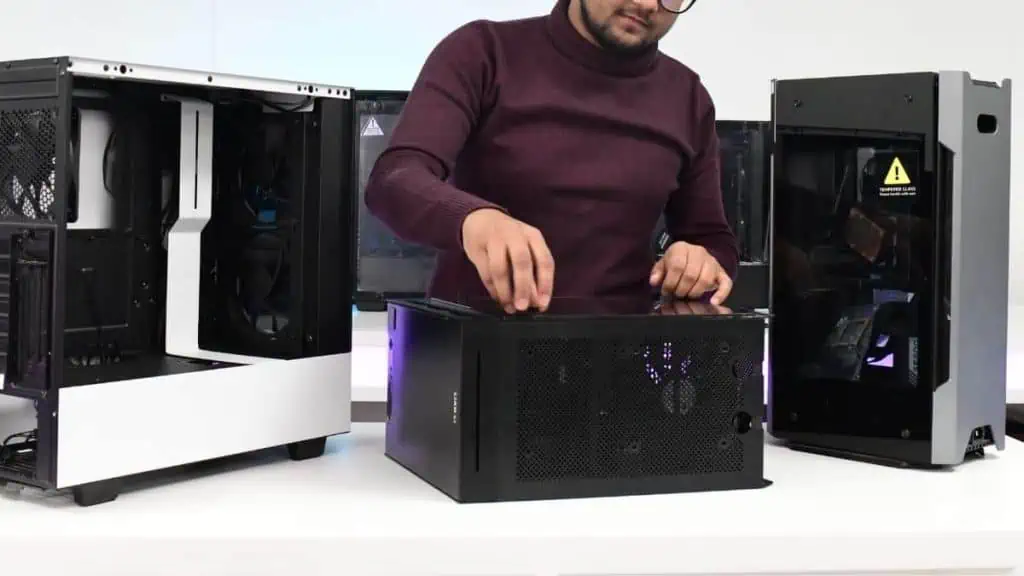PC cases offer better cooling and help in noise reduction. It even prolongs your components’ lifespan and helps prevent them from dust buildup and static electricity.
So, you absolutely need a PC case! But this doesn’t mean you can’t start your computer without one.
If you’re frequently into hardware testing, connecting the components correctly and jump-starting the motherboard should complete the POST.
Now, let’s delve deeper into my thoughts below.
Times When PC Case Isn’t Essential
You can certainly save a few bucks by not opting for a PC case and instead expand your budget for a CPU or GPU. Or rather go economic by selecting a cheaper PC case instead.
I even performed a small experiment with one setup without a PC case for about a week. Negating slight overheating issues here and there, the PC worked without any issues. The only problem was that I had to clean it regularly and along was the risk of accidental liquid spill.
Here are a handful of scenarios where PC cases aren’t quite necessary:
Before Assembling a Rig
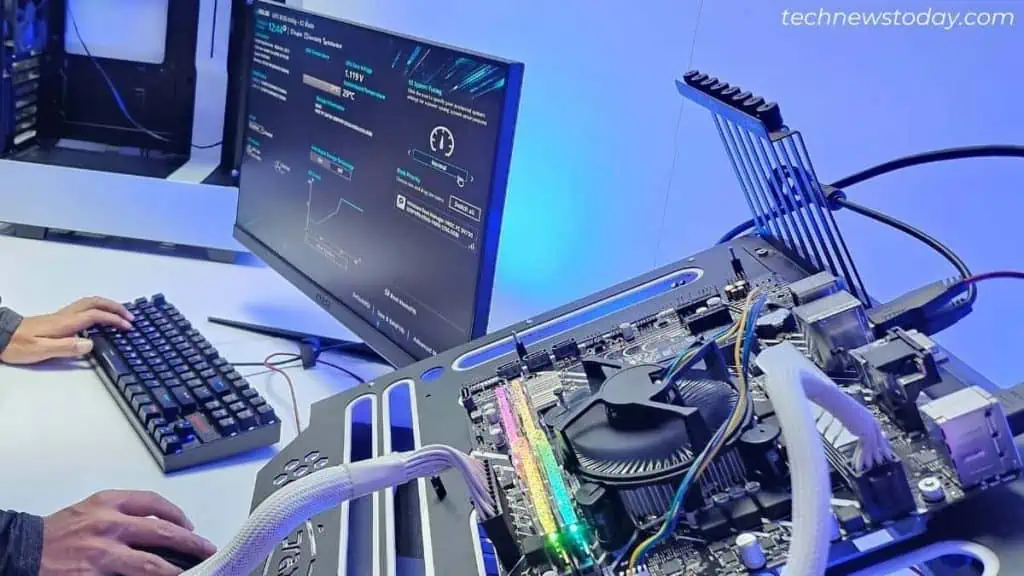
If you have opted for a custom PC build, it’s essential to ensure none of the components are defective. There are cases of DOA (Dead on Arrival), which you should rule out.
It’s even more practical to test out the components outside the PC case first. Imagine fitting every part, but there’s no display?
To tackle this, our team always ensures each of the new builds gets to BIOS before housing everything.
You see, there’s no need for a PC case in this scenario.
Frequent Hardware Testing
This case holds for enthusiasts and content creators like me.
At TechNewsToday, we are focused on providing well-tested content for our readers. Since we are involved in rigorous verification for every single guide, we have to set up multiple systems every day!
If we opt for individual PC cases, this adds to our cost and every build takes a certain time for sure. Instead, we utilize a Test Bench, which has significantly helped reduce our cost and time.
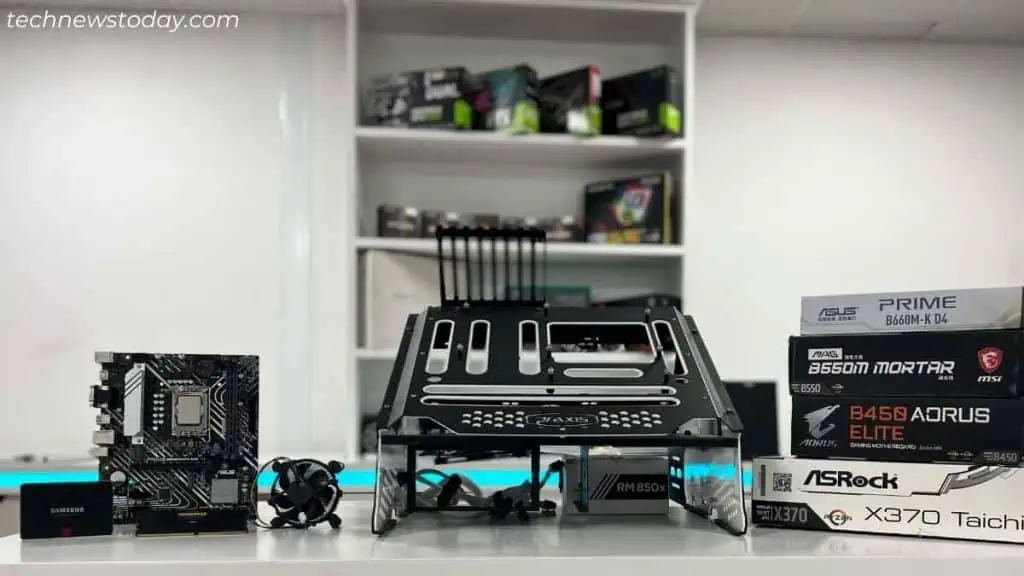
I’m not saying that you need to purchase a similar product – you can place your motherboard on a cardboard/wooden box or even on your desk.
Just ensure there are no VRM MOSFETs underneath and the surface isn’t metal.
Otherwise, the motherboard may overheat as the MOSFET temperature goes high due to poor heat dissipation. The worst-case scenario is short-circuit!
My Tip: Always place the components inside anti-static bags and packaging boxes when not in use.
Why I Recommend Using A PC Case
Other than the aforementioned reasons, you absolutely need a PC case. Even though it’s possible to start your computer outside, this is only recommended for a short period.
With proper care and regular cleaning, you might be able to extend its use case. But along comes the risk of physical damage due to liquid spills and accidental touch.
So, even a budget PC case is going to be worth it if you’re looking to future-proof your components. Here are the main reasons for that:
Better Cooling and Airflow
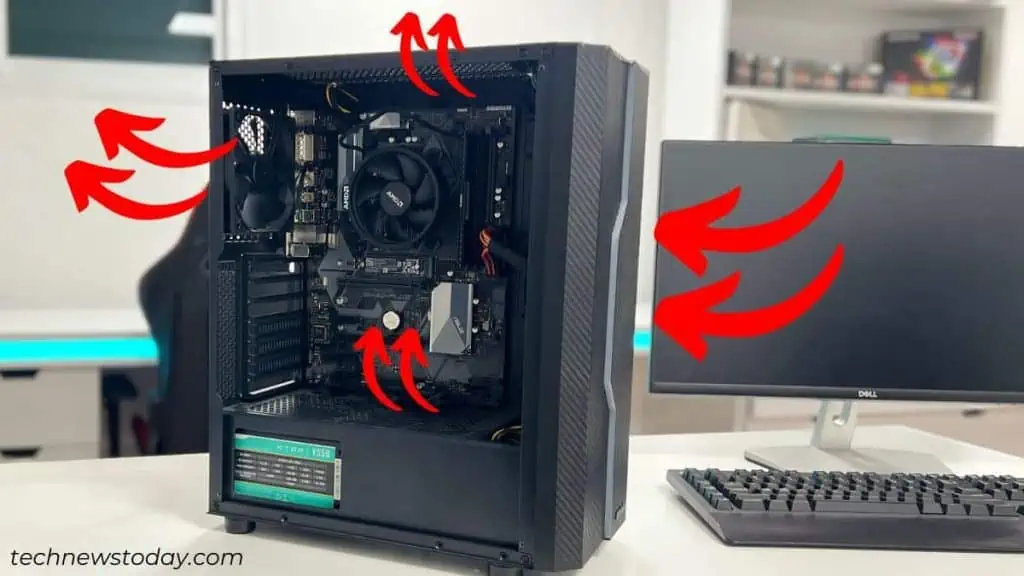
In an open build, the CPU cooler dissipates heat directly into the surroundings. Since the intake fans are missing, no cool air is supplied, and the airflow is greatly affected.
With a PC case, intake fans bring in fresh air, while exhaust fans throw out the hot and stagnant air from heated components. Since there’s proper airflow, it leads to better cooling.
Do note that the greater the number of case fans, the higher will be the total CFM. Meaning more air moves in and out.
It’s also essential to maintain neutral air pressure inside the PC case. I like to balance the intake and exhaust fans and recommend the same.
Note: Negative and positive pressure have their own pros and cons. While the former is better for reducing the temperature inside the chassis, the latter prevents excessive dust buildup.
Noise Reduction
A few PC components generate whooshing sounds (especially the fans, hard drives, graphics cards, and PSUs). If you’re not going to use a PC case, they might be too loud for your ears.
Modern PC cases come with sound-deadening foams that eliminate resonant frequencies/vibrations coming from the spinning components.
The sound bounces around inside the chassis before reaching you. That’s the reason you have a quieter experience when using any standard PC case.
If you prefer complete silence, it’s better to go for casings that support sound-dampening features. These are usually expensive, though.
Avoid Dust Buildup
The internal components accumulate dust more quickly when there’s no PC case. This scenario worsens if you’re a pet owner, as more hair can get stuck between the connectors, ports, and slots.
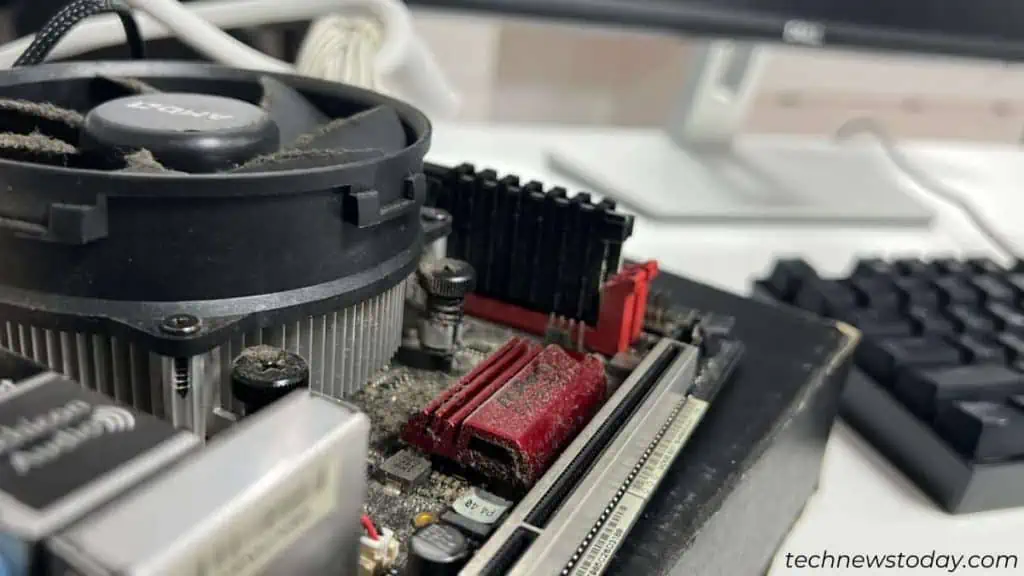
On the other hand, side panels and dust filters act as a barrier against dust bunnies, debris, and pet fur.
If you have appropriately installed the case fans ensuring proper airflow and maintaining positive air pressure, dust buildup is heavily reduced.
It’s not that your computer won’t be dusty at all. Various factors come into play, like your PC’s location and the room’s condition. So, you should still clean your PC from time to time.
Prevention From Accidents
Since your components remain exposed, the major con of not using a PC case is accidental liquid spills. A drop of water in any part shall permanently damage your computer.
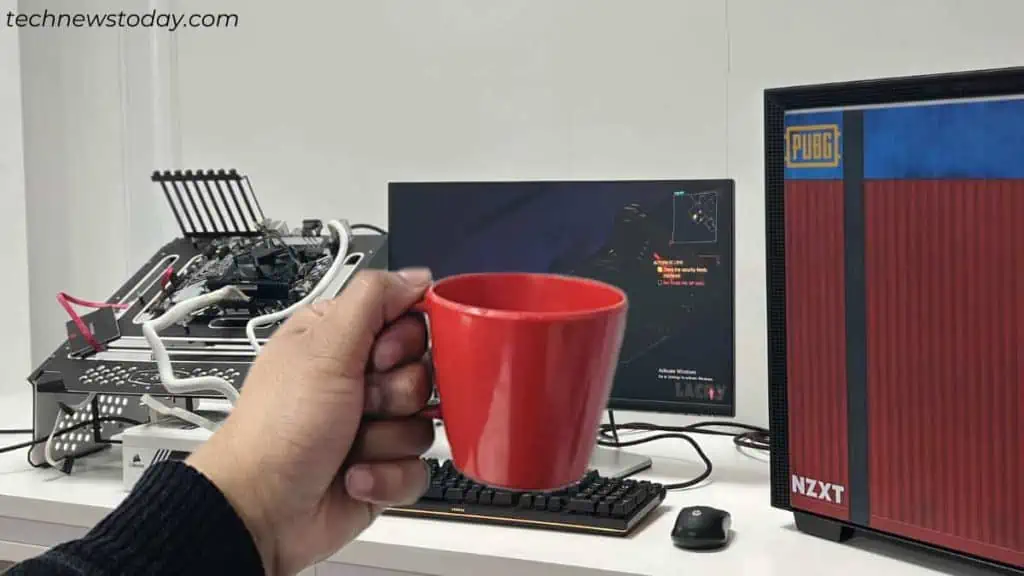
Not to forget about human and pet intervention. Even touching a working motherboard may discharge static electricity, eventually damaging it.
While this is a rare scenario and can be prevented by grounding yourself properly, it’s still a risk factor.
A common issue is with heavy components, like graphics cards. If not secured properly, this may lead to frequent crashing and PCB warping. With poorly manufactured boards, the PCIe slot can even break.
You can avoid these issues simply by opting for a PC case. It will handle the weight of heavy components, prevent accidental touches, pet intervention, and even static electricity.
Higher Durability and Longevity of PC Components
Every PC component has an estimated lifespan and can generally last 5 to 7 years on average. However, the hardware parts can die quickly due to several environmental factors.
With no PC case, the chance of corrosion increases slightly, especially the motherboard’s electrical contacts. This is especially the case if your room is too humid.
Issues like short-circuiting, ESD, and physical damages (mentioned in the earlier heading) can all impact the components’ lifespan.
It isn’t worth risking any of your valuable hardware just because you don’t desire a PC case. That’s the reason I have been emphasizing to get at least a low-end/cheap casing throughout this article.
Aesthetics and Easy Cable Management
PC builds outside the chassis can be aesthetically pleasing for users who like to show off their high-end components. That doesn’t mean getting a PC case ruins it unless you have gone for a traditional one.
A PC case actually beautifies your setup. You can add RGB lighting and customize it.
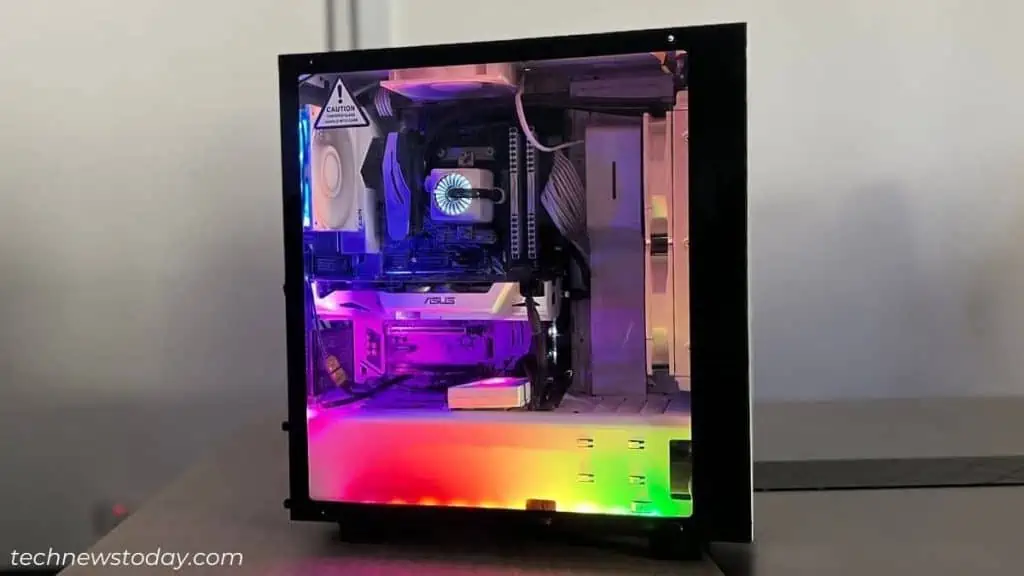
The NZXT H510 Elite is excellent for my upcoming all-white gaming PC build. I’m planning to go for the ROG Maximus Z690 Formula and CORSAIR RM-850X PSU.
I also have the VENGEANCE RGB PRO 16GB RAM and NZXT Kraken 280 RGB AIO in my mind. If everything goes well, we’ll bring its ASMR PC build video soon.
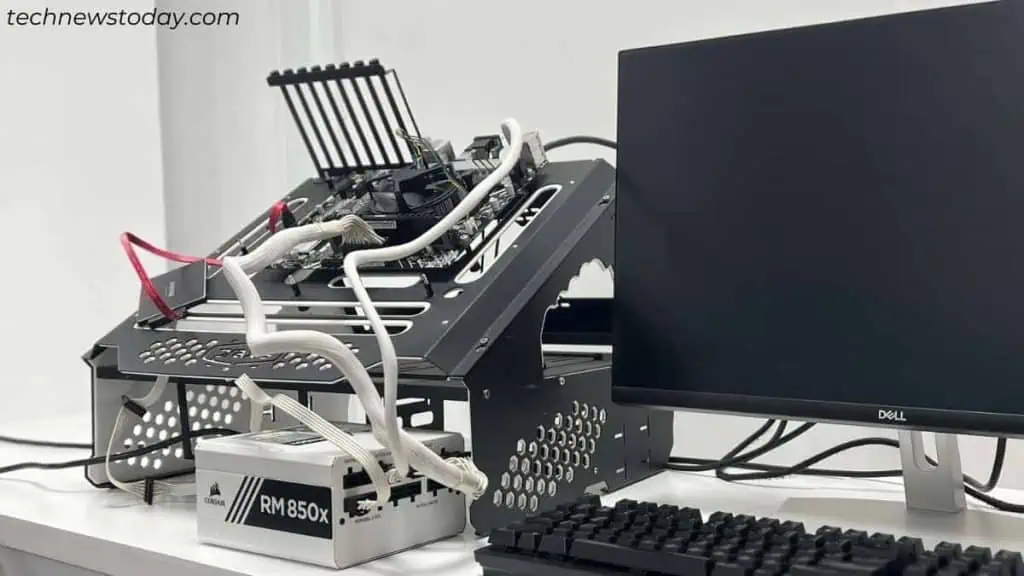
Even if you take the risk and build your PC without a case, the cable clutter can mess up the aesthetics. That’s certainly not the case if you properly fit all the components inside the chassis.
PSU shroud and routing holes in the PC case, along with the use of zip ties and rubber grommets, can extensively help in cable management.
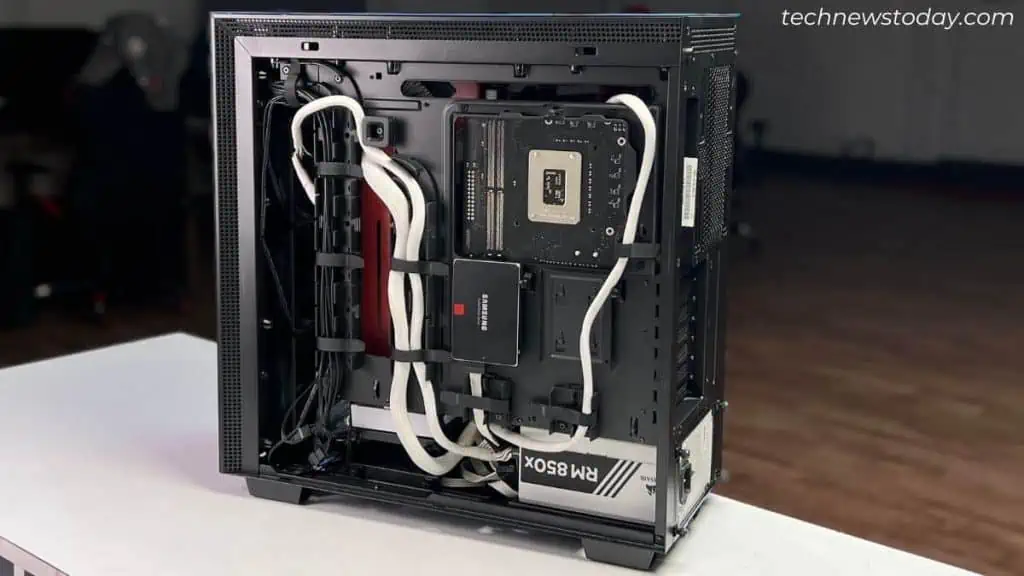
Also, don’t forget to manage the cables outside the case (peripherals, monitor, ethernet, etc.), ensuring your workspace remains tidy.
Alternatives: Open-Air and DIY PC Case
If you’re seriously into the mining business or even enthusiastic about multi-GPU builds, a standard PC case wouldn’t be fruitful. The main issue is improper spacing.
Instead, you should go for dedicated mining frames or shelves. This is because open-air builds are better in terms of heat dissipation.
Note: Make sure you’ve chosen the right motherboard and CPU for crypto mining as well.
For custom loops, it’s always recommended to go for open-air builds. These don’t just add aesthetics but even offer vast airflow and fantastic cooling management measures.
Even at our office, we have set up an enthusiastic water-cooled build for gaming and editing. The Antec Torque open-air case is housed with X570 AQUA and RTX 2080 TI:
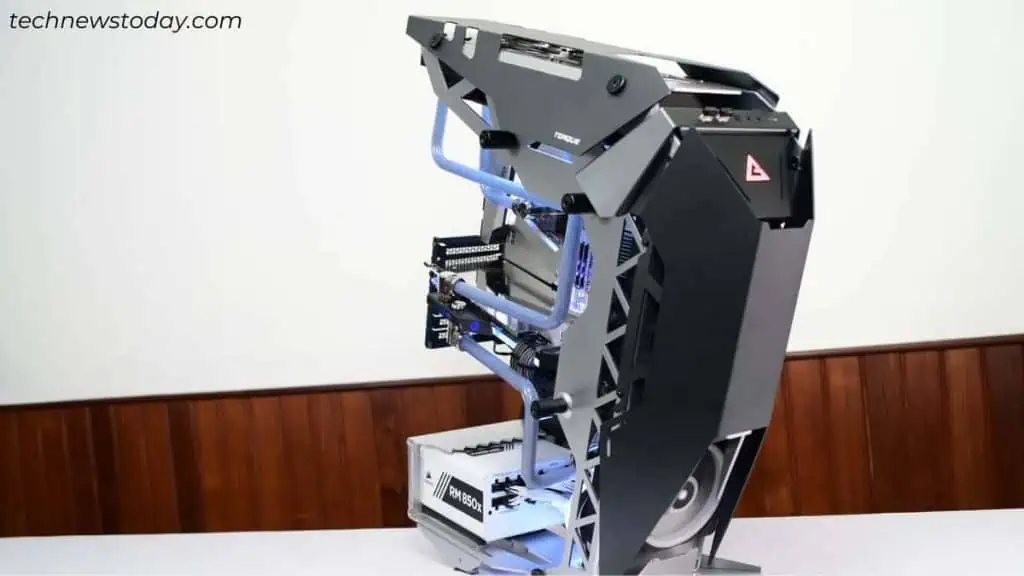
Heard of a DIY PC case? Yes, that’s also possible if you have basic design and woodworking skills.
Similar to what my favorite YouTuber, Linus, and his team have done in one of their challenge videos, you too can use cardboard to create a DIY PC case.
Or go for a wall-mounted build instead.
PC Build With or Without a Case: Pros and Cons
My answer is pretty simple. Always go for a PC case, as it protects your valuable components in the long run and is usually the cheapest among all the parts.
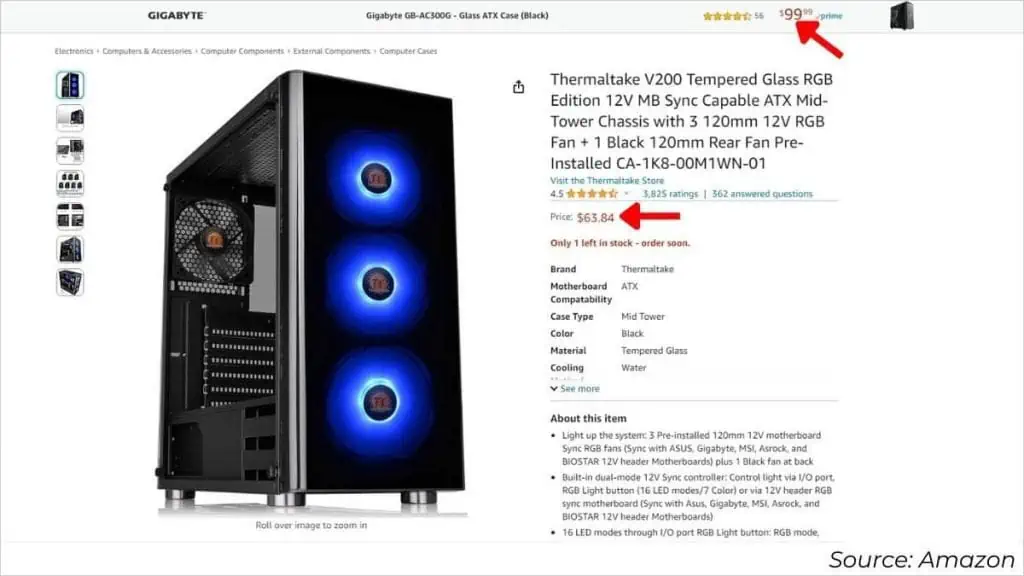
Even with no PC case, you might need an external power button, which adds up to the cost anyway. While it’s possible to jump-start the motherboard (by shorting the power headers), doing this every time is quite hectic.
Still, having double thoughts? My summarized points below should make it easier whether you should go for a PC case or not.
PC Case
- Better cooling and airflow.
- Less fan noise. You can even get silent PC cases with sound-dampening features.
- Prevents internal components from dust and pet hair.
- Prevents your PC from accidental spills.
- Cable management becomes easier.
- Components last longer and stay protected irrespective of the environment.
- High-quality casings and open-air builds are aesthetically pleasing.
- Compared to other components, it’s the cheapest.
- Some casings with high build quality can be expensive.
- You’ll need additional fans along with appropriate knowledge to install them.
- Since dust buildup can still happen, it becomes a little more difficult when cleaning.
- Casings with poor build quality can affect aesthetics.
No PC Case
- Lets you showcase your high-end components (so, better aesthetics).
- Reduction of cost.
- Preferable if you regularly test hardware components.
- Overheating.
- You may require an external power button.
- Excessive dust and hair buildup.
- More prone to static discharge and physical damage.
- Loud fan noises.
- Affects the overall lifespan of your computer (components can die sooner).
- Difficulty in managing cables, which may also affect aesthetics.
Conclusion
By now, I’m sure you have already decided whether to use your system with or without a case.
If you don’t want a PC case, it’s okay, but in case you want to keep one, make sure you choose a case that offers good features at a reasonable price.
We also have different guides to help you out for that:
- Best budget PC cases
- PC cases under $100
- Best EATX and ATX builds
- For optimal airflow
- White PC cases for aesthetics
- PC cases with tempered glass
- For compact builds

